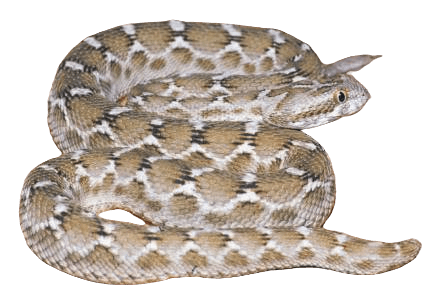Species of saw scaled vipers snake is venomous. Saw scaled viper snakes scientific name is Echis carinatus. They are mostly found in dry regions of Africa, India, Sri Lanka and Pakistan. They are very poisonous and make a sizzling warning sound. Its name comes from the Greek word for viper and echis from Latin. Some of the species responsible for the highest number of snakebite cases and deaths in the world include saw-scaled vipers.
Saw scaled vipers are the smallest snakes and the largest species.
Its head is small, short, broad and pear-shaped and distinct from the neck. The eyes are very large and the body is cylindrical in shape. It is known for its poison, which can be fatal if ingested. This snake bites humans, dogs and cats. The saw-scaled viper spends its daytime hours in burrows and crevices. It is quiet in the morning and comes out only to hunt in the evening.

When bitten by this saw-scaled viper snake, its venom causes the body to develop coagulopathy and defibrination, the effects of which can last from days to weeks.
The venom of this snake bite can cause bleeding anywhere in the body, including intracranial hemorrhage. The toxicity of venom varies from the among species, individual specimens, geographic locations, sexes, different forms, and method of injection. Saw scaled vipers feed on frogs, spiders, worms, beetles, solifugid, toads, reptiles, small mammals, centipedes, scorpions, grasshoppers and birds etc.
Saw scaled vipers are very aggressive compared to most of the other deadliest snakes.
The venom from female snakes is on average twice as toxic as that from males. Saw scaled vipers colors are brown, orange and gray with dark dorsal spots and lateral spots. It has a brick red color on the body with a zigzag pattern and a + shaped pattern on the head.
These saw-scaled vipers snakes account for the highest number of snake bite deaths in West Africa.
Saw scaled vipers are poisonous. After being bitten by this snake it is very difficult for any animal to survive if medical help is not received immediately. Victims of these snakebites are more likely to die from blood clots, sudden systemic bleeding, and disseminated intravascular coagulation. Its venom contains prothrombin activator and hemorrhagic enzymes.
Saw scaled viper venom is widely distributed by its species. Saw scaled viper species have large fangs that can reach up to 50 mm. In tropical Africa it is known as gaboon viper. When it is threatened it raises its coils and brings its scales together to produce a loud noise. It usually looks like a cat snake with a shaded pattern on the head.
Saw scaled vipers hiding in the bushes when it rained.
They can be hidden under a large leaf or small ground cover. Its venom damages tissue and causes blood to clot. Young saw-scaled vipers feed exclusively on other vertebrates and small insects. Some scaled vipers give birth directly to young and some lay eggs. The venom is different for juveniles compared to adult saw-scaled vipers.
The saw-scaled vipers of South India are very small. They start shedding their skin on their first day. Because of their small size, they prey on small prey. They have very small clutches of 10 neonates in a very large clutch, but typically five to six neonates per clutch. Saw scaled vipers are common to see in exposed areas.
